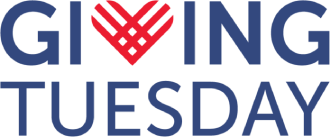As you plan for the giving season, building a strong case for your GivingTuesday campaign is key to driving participation and engagement. To help you make the case for investing in a GivingTuesday campaign, we’ve gathered key messages and research insights that you can use to inform your colleagues and stakeholders. These data points and visualizations can be adapted for internal communications, presentations, or strategy discussions, making it easier to showcase the potential impact and value of participating in GivingTuesday.
Unlocking Potential: Maximizing GivingTuesday Fundraising Opportunities
1. Not everyone is being invited to give: 9% of those who hadn’t been asked would’ve given if they’d been asked.
- GivingTuesday is an opportunity to ask—and ask again. Our GivingPulse data from 2023 shows there’s an untapped generosity market: 55% of donors in the first three quarters, and 47% in the fourth quarter, don’t recall being asked to give. Even more striking, 9% of those who weren’t asked would have donated if they had been¹.
- “Donor fatigue” is less about being asked too often and more about how meaningful the message to engage is. Focus on giving your supporters a clear opportunity to make a positive impact—that’s what truly drives engagement².
2. Noise helps: 86% of people aware of GivingTuesday report that the initiative inspired them to be more generous³.
- GivingTuesday motivates people to give by creating a collective moment of generosity, which leads to more giving before and after the day itself. By engaging donors on GivingTuesday, nonprofits can tap into and capitalize on this surge of generosity. It’s a time when donors are ready to support causes they care about, and raising awareness helps them reflect on how they can contribute. This also strengthens relationships with both new and existing donors, which organizations can build on throughout the year.
- Accompanying visualization
3. GivingTuesday doesn’t cannibalize on year-end donations⁴.
- 80% of people who donate throughout the year and on GivingTuesday give again before the year ends, and most GivingTuesday donors seek more opportunities to contribute throughout the year.
- In 2022, GivingTuesday became the leading day for new donors, surpassing December 31. This offers nonprofits a unique chance to gain new and recurring long-term supporters.
- Research from Canada indicates that orgs that participate in GivingTuesday in 2022 raised 5.6 x more than those that didn’t. GivingTuesday can be a powerful tool for attracting new donors, inviting more support from existing supporters, and building lasting relationships with communities⁵.
- Accompanying visualization: 1, 2, 3
4. GivingTuesday is a big day to capture and engage recurring donations.
- In 2022 and 2023, 12% of recurring gifts were started on GivingTuesday itself⁶, showing that people are already focused on giving during this time. This makes GivingTuesday a perfect opportunity to capture attention and build lasting connections.
- For smaller organizations, an effective GivingTuesday campaign to acquire recurring donors can be a game-changer, allowing them to engage with their communities in ways they may not be able to throughout the year.
5. Young adults are most likely to say they are “definitely” inspired by GivingTuesday⁷.
- GivingTuesday attracts a younger audience (ages 18-34), making it an ideal time to connect with them. Engaging young supporters helps build trust and long-term relationships that can lead to bigger donations later in life.
- Since generous donors often engage with organizations for 11-40 years before making significant gifts, it’s essential to foster these connections early. Offer opportunities for non-financial involvement that feel accessible, encouraging young donors to participate without financial pressure⁸.
- Accompanying visualizations: 1, 2, 3
Encouraging Non-Monetary Contributions on GivingTuesday
1. People give in many ways, GivingTuesday is an opportunity to engage supporters in non-monetary giving.
- Volunteers often become financial donors, offering stable support even during slower periods. During GivingTuesday 2023, 32% of participants gave in multiple ways—through time, money, or goods. By offering different ways to engage on GivingTuesday, you can attract supporters who want to connect with your organization in various ways⁹.
- Accompanying visualization
2. GivingTuesday is an opportunity to activate your volunteers and steward them.
- When donation rates drop, those who volunteer maintain their giving behaviors and are more likely to stay monetary donors¹⁰.
- Celebrating non-monetary contributions helps build connections. On GivingTuesday, offer at least one way for people to engage beyond financial giving. Appreciating and updating all givers encourages ongoing support throughout the year.
- Accompanying visualization
The data is clear: more generosity is waiting to be unlocked. By asking more often, engaging younger audiences, and using GivingTuesday to boost volunteerism, nonprofits can tap into new, sustainable support and drive year-round impact.
There’s still time to enhance your GivingTuesday efforts – for campaign planning resources, visit givingtuesday.org/participate. See you on December 3rd!
¹GivingTuesday, GivingPulse, https://www.givingpulse.givingtuesday.org/q12024.
²GivingTuesday, The Global Day Of Generosity: Complete Guide For Nonprofits, Ngos, Csos, + Community Organizations, 2023.
³GivingTuesday, 2022 Global Awareness Survey
⁴GivingTuesday, GivingPulse Q3 2023.
⁵GivingTuesday, CanadaHelps Insights 2022.
⁶The Recurring Giving Report: Data-Backed Insights for Sustainable Generosity, Neon One.
⁷GivingTuesday, 2023 Global Awareness Survey
⁸2022 US Annual Survey, GivingTuesday, GivingPulse 2022-2023, Ruffalo NL, Page 3-4
⁹Candid GT report
¹⁰GivingTuesday, GivingPulse, https://www.givingpulse.givingtuesday.org/q12024.



